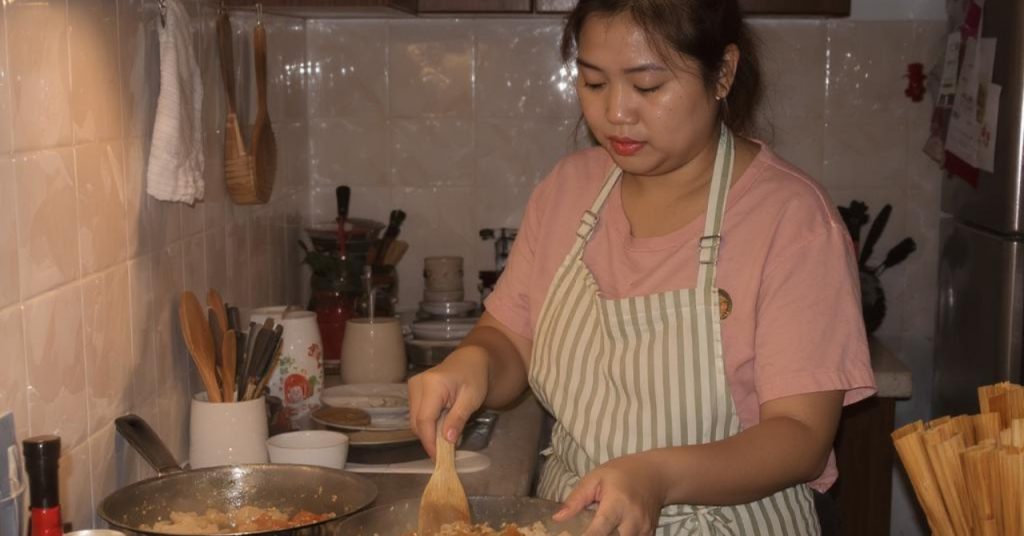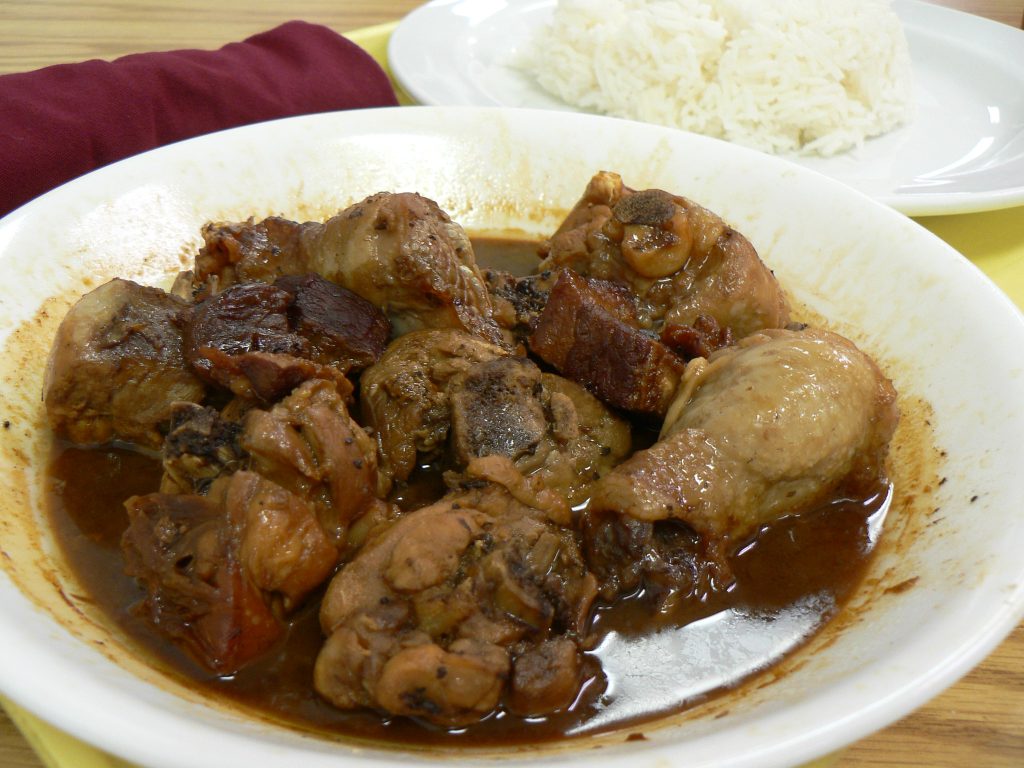When you’re working far from home, cooking Filipino meals brings comfort, savings, and a taste of nostalgia. Aside from this, packing your own Pinoy dish is much cheaper than buying ready-made food outside. We’re all doing our best to cut costs and save money to send back to our family back home. So bringing our own food will definitely help in the added savings.
With the right ingredients—some local, some creatively substituted—you can whip up dishes you love without breaking your budget.

Essential Budget Ingredients for OFWs in Taiwan
You don’t need a fancy kitchen or imported products. Start with these:
- Rice – Buy in bulk from supermarkets or wholesale shops.
- Eggs and Tofu – Excellent, cheap protein found in all local markets.
- Chicken and Pork – Thighs, drumsticks, or belly cuts offer great value.
- Vegetables – Try kangkong (water spinach), cabbage, and carrots.
- Condiments – Soy sauce, vinegar, and fish sauce are easy to find in both Taiwanese and Filipino stores.
Easy Filipino Meals You Can Cook Weekly
Start with simple recipes that offer comfort and convenience:
| Dish | Key Ingredients | Cooking Time | Budget Tip |
| Chicken Adobo | Chicken, soy sauce, vinegar | 40 mins | Marinate overnight for deeper flavor |
| Giniling | Ground pork, carrots, tomato sauce | 30 mins | Buy frozen mixed veggies to save prep time |
| Eggplant Torta | Grilled eggplant, eggs | 20 mins | Grill over your gas burner for smokier taste |
| Tinola | Chicken, ginger, green papaya | 45 mins | Substitute green papaya with upo or sayote |
| Lumpiang Shanghai | Ground pork, carrots, lumpia wrappers | 1 hr | Freeze extras for later meals |

Where to Buy Ingredients in Taiwan
- Local Markets – Best for affordable produce and tofu.
- Filipino Stores – Find sinigang mix, bagoong, and other staples.
- Asian Supermarkets – Great for bulk condiments, frozen meats, and vegetables.
- Night Markets (After 7 PM) – Fresh produce often sold at a discount.
Filipino Dishes with a Taiwanese Twist
To adapt to what’s locally available, try these substitutions and fusions:
- Taiwanese Adobo – Add five-spice powder and a splash of Shaoxing wine.
- Ginisang Pechay with Oyster Sauce – Swap native pechay for Taiwanese bok choy.
- Lumpia in Bean Curd Sheets – Use local tofu wrappers instead of lumpia skins.
- Humba with Shaoxing Wine – Adds deeper umami flavor and aroma.
- Sinangag with Taiwanese Garlic – Use stronger, local garlic for extra punch.
Featured Recipe: Taiwanese-Style Chicken Adobo
Here’s a step-by-step version that beginners can easily try:
Ingredients:
- 500g chicken (thighs or drumsticks)
- 1/4 cup soy sauce
- 1/4 cup vinegar
- 4 cloves garlic, minced
- 1 tsp black peppercorns
- 2 bay leaves
- 1 tbsp sesame oil
- 1 tbsp Shaoxing wine
- 1 tsp five-spice powder
- 1 tbsp brown sugar
- 1/2 cup water
- 1/2 cup pickled mustard greens (optional)
Instructions:
- Marinate chicken in soy sauce, vinegar, garlic, peppercorns, and five-spice for at least 30 minutes.
- Brown the chicken in sesame oil.
- Add marinade, bay leaves, water, and Shaoxing wine. Simmer for 30 minutes.
- Toss in pickled mustard greens and brown sugar. Simmer until sauce thickens.
- Serve hot with rice!
This fusion has the soul of Filipino adobo with Taiwanese flair—savory, aromatic, and comforting.
I remember the first time I cooked Taiwanese-style Chicken Adobo. I stuck with the basics—soy sauce, vinegar—but added five-spice powder and a splash of Shaoxing wine, unsure if it would work. As it simmered, the aroma was richer, warmer, almost nostalgic.
When I took my first bite, I paused. It was adobo, but deeper—comforting yet unfamiliar. And then it clicked: Filipino food already carries Chinese influences. Lumpia, pancit, humba—we’ve been blending flavors for generations. This version wasn’t a stretch. It felt like home, just wearing a new accent. That simple meal reminded me that even in a new place, I could still taste something deeply familiar.
Money-Saving Tips for OFW Cooks
- Batch Cooking – Prepare meals for the week to save time and reduce food waste.
- Use Taiwanese Substitutes – Choose local greens, meats, or seasonings for cost-efficiency.
- Share with Housemates – Cook large portions and split the bill and meals.
- Try Hotpot Markets – Often cheaper than supermarket meat sections.
Frequently Asked Questions
Q1: Can I use Taiwanese vinegar or soy sauce for Filipino dishes?
Yes! Taiwanese soy sauce tends to be sweeter—just balance it with more vinegar or add a touch of calamansi/lime if available.
Q2: Where can I find Filipino ingredients in Taiwan?
Check MECO or MWO’s FB pages for vendor lists. Try Howdy Brunch Café or visit Filipino stores in Taipei and Kaohsiung.
Q3: How can I cook if I only have a small burner or induction cooker?
Many dishes like adobo, tinola, and sinangag require just one pot or pan. Invest in a multipurpose rice cooker too!
Q4: Are there cooking groups for OFWs in Taiwan?
Yes! Join FB communities like Pinoy Cooks in Taiwan for tips, budget hacks, and even bulk orders of Filipino goods.
Video: ADOBONG TAIWANESE STYLE/Bernzelle03 Vlog
Taiwanese-style adobo brings a fresh take on the classic Filipino dish.
The video showcases a step-by-step process of preparing adobo with an unexpected addition—alcohol.
This method highlights local culinary influences, making the flavors distinct from traditional recipes.
Through clear instructions, viewers get a glimpse of how this variation is made, blending familiar techniques with a surprising element.
Final Thoughts
Cooking Filipino meals while working in Taiwan isn’t just about saving money—it’s about staying connected to home. Each dish you make brings a sense of comfort and culture into your daily routine, even when you’re miles away. With a bit of creativity and some local ingredient swaps, you can enjoy the flavors you love while making the most of your time abroad. So grab that pan, experiment with what’s available, and let every meal remind you of where you came from—and how far you’ve come.
